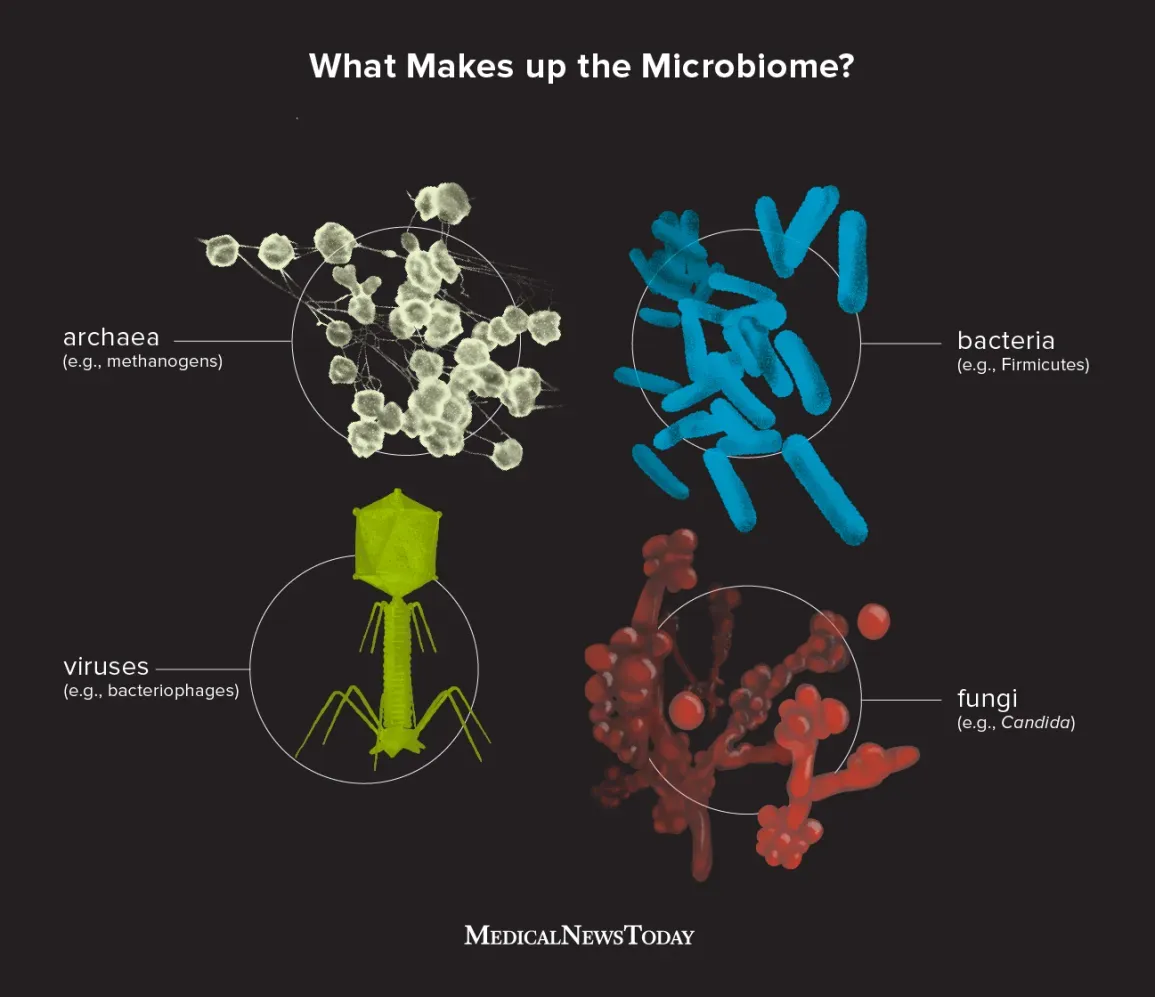What is the Human Microbiome?

The human microbiome is an accumulation of microbes on human tissues and biofluids. It influences our growth and development and can influence our adaptive immune system. Read on to learn more about the human microbiome and how it impacts our health. Here are some examples.
The GI tract microbiome of an infant resembles that of an adult.
The infant's gut microbiota resembles an adult's, but there are significant differences. The infant gut microbiota exhibits a diverse composition of taxonomic groups. A healthy infant microbiota contains a high proportion of beneficial species, with the ratio of Bacteroidetes to Firmicutes converging between the two groups. However, in adults, the gut microbiota has lower diversity and higher proportions of undesirable bacteria.
The development of the infant GI tract microbiome is critical, and the direct interactions between microorganisms and host cells seed their immunological, cognitive, and physiological development. Disruption of this delicate microbial ecology can lead to disease. This is contrary to the sterile womb paradigm, which holds that the human fetus develops in a sterile environment. However, recent studies have begun to refute the sterile womb paradigm by demonstrating the presence of bacterial communities in amniotic fluid and placenta during pregnancy. Several inflammatory factors during pregnancy are also known to influence the infant's gut microbiome.
Influences adaptive immune system
The human microbiome influences the adaptive immune system in a multitude of ways. The microbial community in the gut supports the growth of regulatory T cells and promotes homeostasis. In addition, it modulates the expression of polysaccharide utilization loci. The gut microbiota also influences B cells. Exposure to the microbiota continuously diversifies the B-cell repertoire and enables the production of T-dependent antibodies, such as IgA.
The human microbiota contains various proteins that are involved in humoral immunity. These proteins help the body identify and neutralize microbial antigens. They play an essential role in the adaptive immune system, which remembers past infections and vaccines to respond quickly to similar situations.
Influences growth
The influences of the human microbiome on growth may be more complicated than you think. While many studies focus on adult Western populations, the microbiomes of children differ significantly from those of adults. By mapping the microbiomes of children, researchers can measure the effects of breastfeeding, maternal antibiotics, and different types of maternal drugs. They can also predict how the microbiome may change if the child falls off its "growth curve."
The human microbiome collects all the microorganisms that live on human tissue and biofluids. This includes bacteria, archaea, fungi, protists, and viruses. This large dataset contains various genes that can help researchers study various diseases.
Influences development
Our bodies are populated with a diverse community of microbes. Our genes primarily regulate the composition of the microbiome. Infants are first exposed to microorganisms in the womb through the mother's breast milk, but the microbiome's composition can be altered by diet and environmental exposures.
The human microbiome is composed of trillions of microbial cells. It accounts for up to ten times more genes than the human genome. It has complex interactions with the immune system, and microbes have the potential to influence development and health. Research focuses on how microbes contribute to our health and how we can optimize our microbiome.
Influences disease
The human microbiome is a collection of bacteria that resides in the body. Every person has a different microbiome. While the majority of these bacteria are not disease-causing, many are. Our genetics, diet, and environmental exposures influence the microbiome composition.
In addition to its impact on human health, the microbiome also influences our energy and metabolic systems. It is also the source of short-chain fatty acids, which are essential in energy metabolism in the host.




